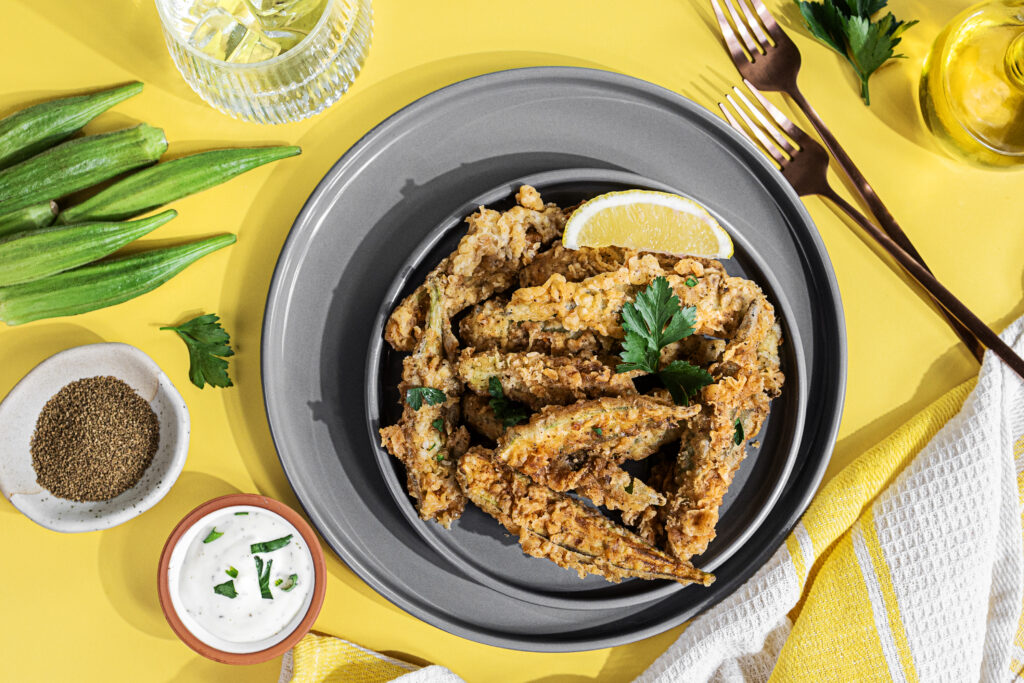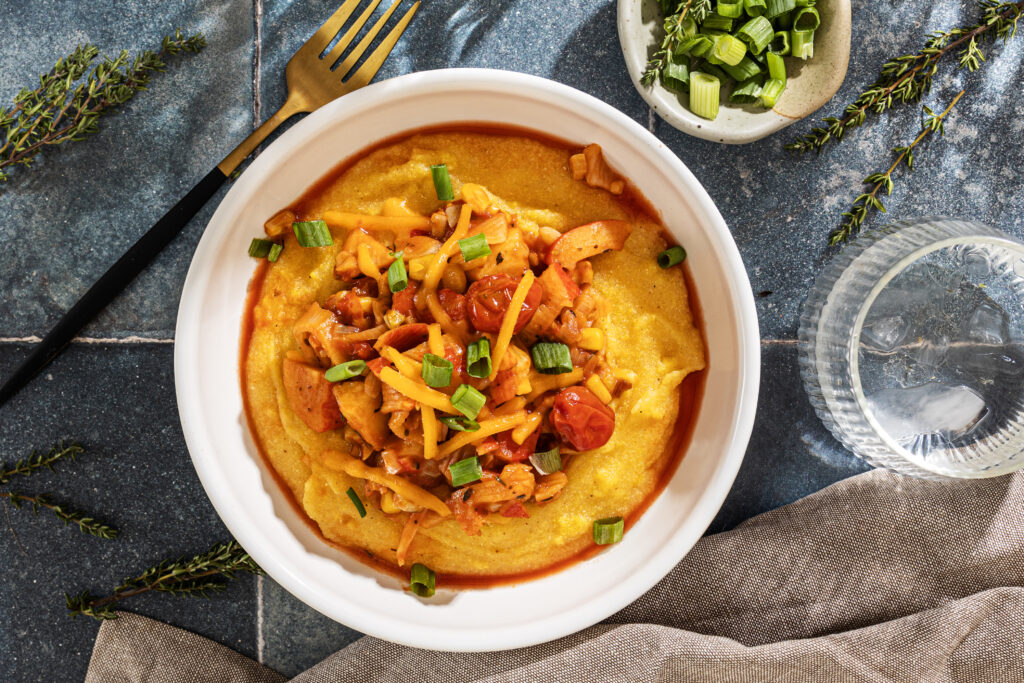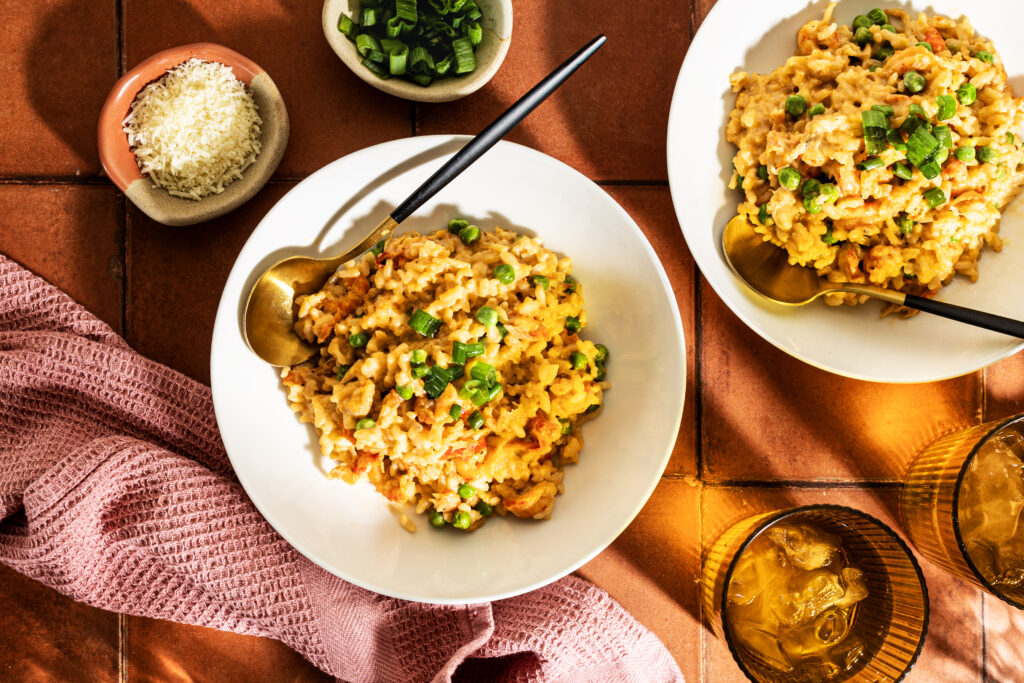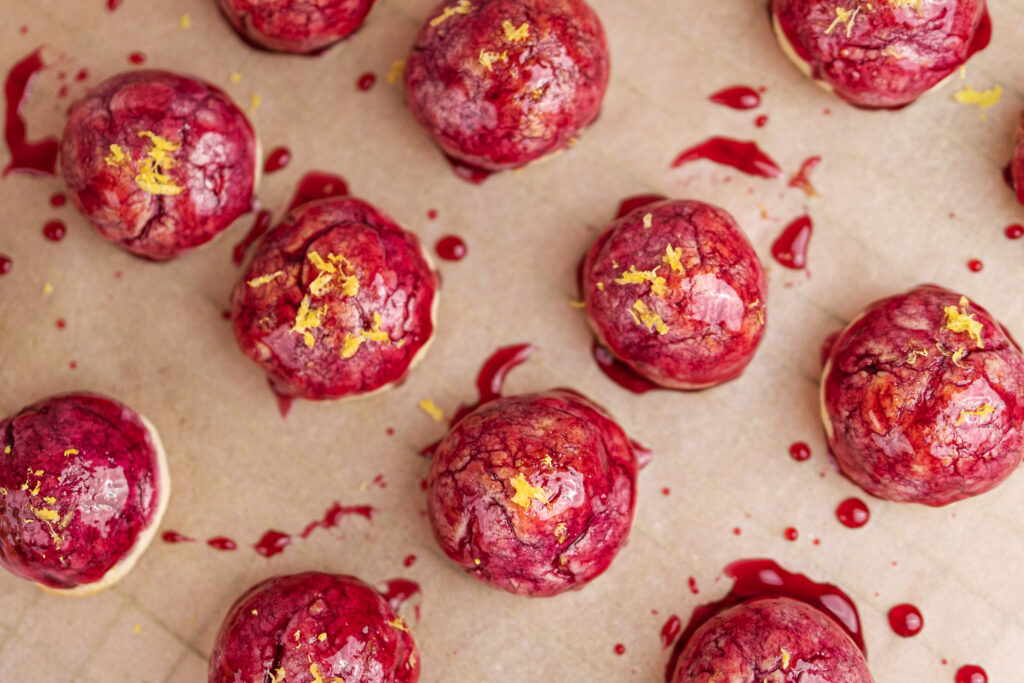Kwanzaa is an annual celebration of African American history and African heritage across the diaspora. Families, communities, and loved ones gather for seven days to participate in rituals highlighting Nguzo Saba (the 7 Principles of Kwanzaa). These Principals are Umoja (Unity), Kujichagulia (Self-Determination), Ujima (Collective Work and Responsibility), Ujamaa (Cooperative Economics), Nia (Purpose), Kuumba (Creativity) and Imani (Faith). While these principles are emphasized throughout the celebration of Kwanzaa, they should be practiced year-round.
Other Kwanzaa activities include feasts (karamu), music, dance, poetry, speeches, and a closing day focused on reflection. Kwanzaa is not a religious holiday, so people of all religious backgrounds can participate in celebrations. It is celebrated between Christmas and the New Year, making the end of the year extra special.
Recipes to Make This Kwanzaa
Fried Okra
Crab Grits
Crawfish Risotto
Hibiscus Cookies
Kwanzaa was created in 1966 by Maulana Ron Karenga, a scholar and activist, to celebrate the history of Africa and the African diaspora. The holiday is modeled after the first fruit festivals celebrated across the African continent. These festivals show gratitude for the year’s first fruit or harvests. Maluna designed Kwanzaa to reaffirm African heritage and culture across the African Diaspora, reinforce the seven principles, celebrate a non-heroic communal holiday nationally, and represent cultural self-determination. Kwanzaa was born from the hardships and struggles of African-American liberation in the 1960’s. These struggles and challenges are still alive today.
The word Kwanzaa comes from the Swahili phrase,” matunda ya kwanza,” which means first fruits of the harvest. Swahili is spoken in East Africa and is one of the most heavily spoken languages in the world. First fruit harvests in Africa are celebrated for 3 – 9 days. Kwanzaa celebrations last seven days. The number seven has significant meaning in numerology. Seven represents perfection, wholeness, and wisdom. During Kwanzaa, you can greet one another by saying, “Habari Gani” (what’s the news). The other person can respond with the name of the day’s principal.
Each day, a candle is lit on the kinara (a candle holder holding seven candles) to honor the day’s principle. Participants are encouraged to be creative and share an activity to observe that principle and discuss what that principle means to the individual.
The Seven Days of Kwanzaa
December 26th: Umoja (unity)
- This is the first day of Kwanzaa. To pay respect to the principle of umoja, the black candle in the center of the kinara is lit. The principle reminds us that we are stronger when we live, work, and learn together.
December 27th: Kujchagulia (Self-determination)
- The second day of Kwanzaa. To pay respect to the principle of kujchagulia, the first red candle on the kinara is lit. This principle is a reminder of the importance of staying determined in the face of hardship.
December 28th: Ujima (Collective work)
- The third day of Kwanzaa. To pay respect to the principle of Ujima, the first green candle on the kinara is lit. This principle is a reminder of the importance of helping one another and working together to solve problems.\
December 29th: Ujamaa (Cooperative economic)
- The fourth day of Kwanzaa. To pay respect to the principle of Ujamaa, the second red candle of the kinara is lit. This principle reminds us of the importance of entrepreneurship and business to support ourselves and the other members of our communities.
December 30th: Nia (Purpose/intention)
- The fifth day of Kwanzaa. To pay respect to the principle of Nia, the second green candle on the kinara is lit. This principle reminds us of the importance of making, building, and improving our communities, the intention driving our actions.
December 31st: Kuumba (Creativity)
- The sixth day of Kwanzaa. To pay respect to this principle, the third red candle of the kinara is lit. This principle reminds us to use creativity to improve our communities and the world around us.
- On Kuumba, the 6th day of Kwanzaa, a Karamu (east takes place). Food is an essential aspect of Kwanzaa. The feasts of Kwanzaa are called Karamu—community members and loved ones often alternate hosting karamu in different homes. The foods of Kwanzaa are vast as they represent the foods of the African diaspora. Dishes come from the continent of Africa, the Caribbean, African American foods from different regions of the United States, and more. Put your spin on Kwanzaa, highlight the foods you think celebrate, and highlight black culture!
January 1st: Imani (Faith)
- The seventh and final day of Kwanzaa. To pay respect to this principle, the last green candle of the kinara is lit. Now, all the candles of the kinara have been lit. This principle reminds us to have faith in ourselves and our community in achieving greatness and overcoming hardships such as inequality. This final day of Kwanzaa ends the festivities with a karamu (feast).
- A gift exchange also takes place on Imani. Gifts often include books, handmade items, or something celebrating African American culture.
Kwanzaa is a time to celebrate unity and the African-American culture. It’s an intentional moment to pass on culture, tradition, and values to children. Children are central to the celebration of Kwanzaa and are represented through muhindi (the symbol of corn).
The holiday can be celebrated publicly in places such as churches, mosques, temples, schools, libraries, and parks or privately in community member’s homes. It is essential to remember that there is no wrong way to celebrate Kwanzaa. Share your favorite foods and enjoy the opportunity to unite and rejoice.




